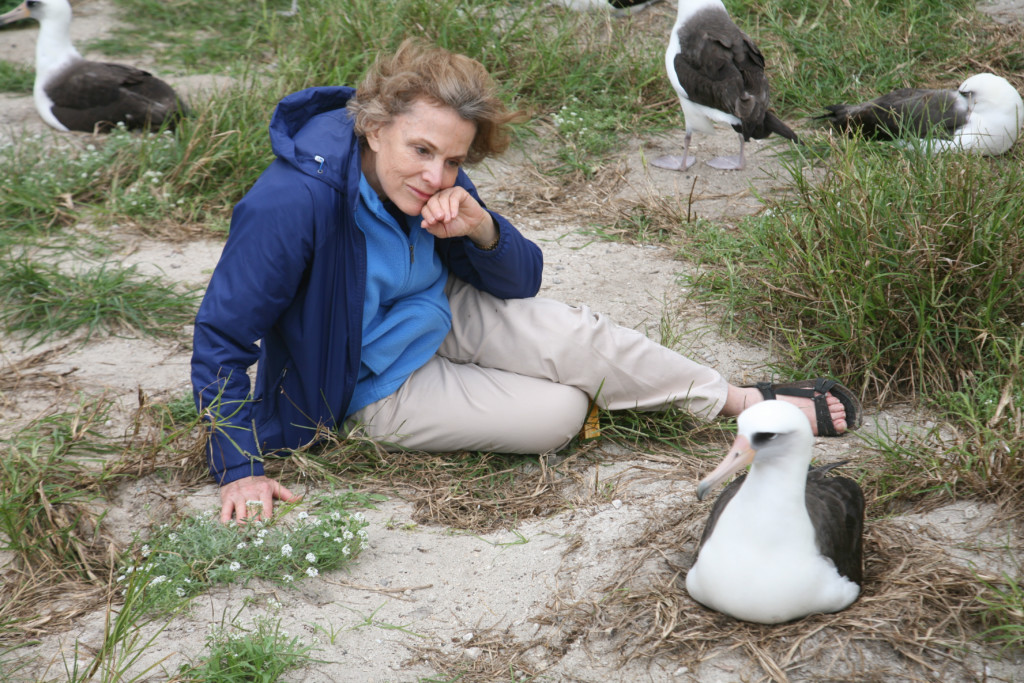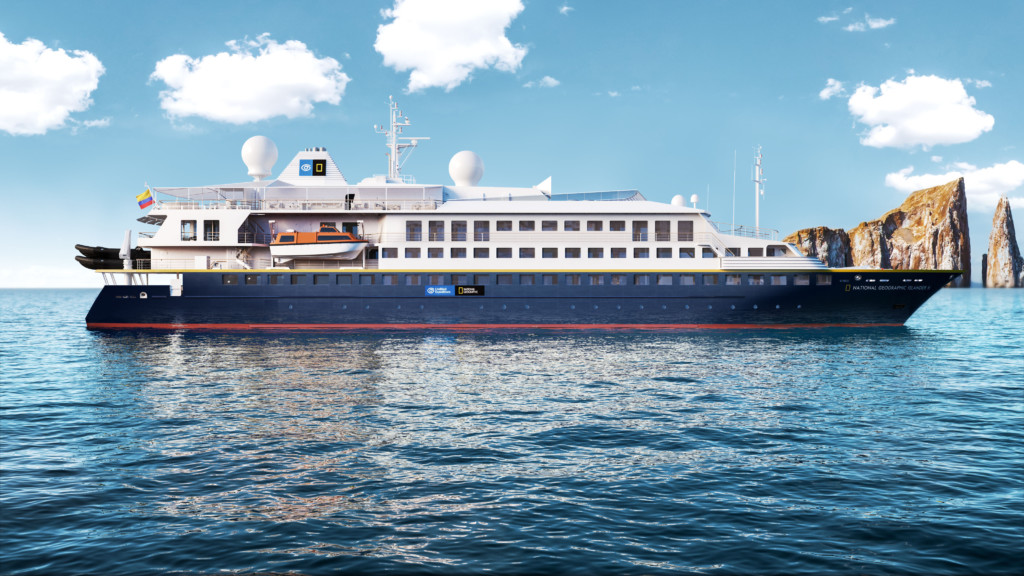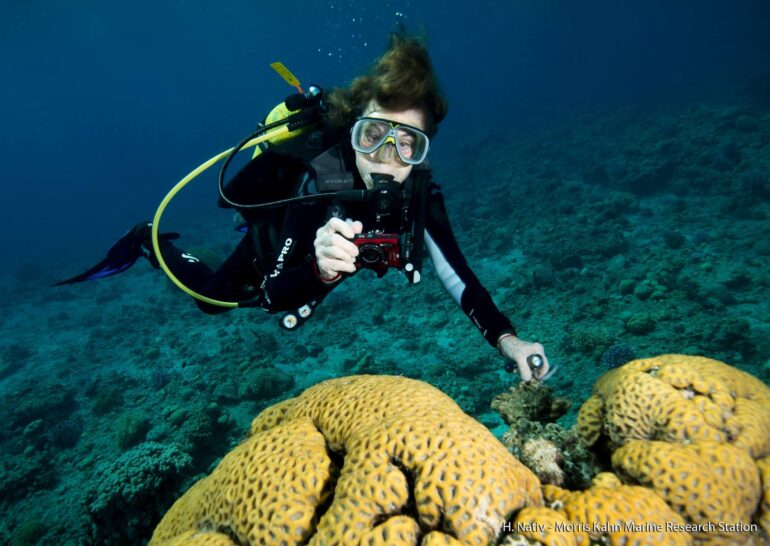At 86 years old, world-renowned marine biologist, National Geographic Explorer-in-Residence, conservationist and author Dr. Sylvia Earle continues to be one of our most inspiring advocates for the protection of the world’s oceans. Named the first-ever Time magazine “Hero for the Planet,” and called “Her Deepness” by the New York Times and the New Yorker, Earle is also former chief scientist for the National Oceanic and Atmospheric Administration, founder of SEAlliance, and president and chairman of Mission Blue.
Having spent more than 7,000 hours underwater, led more than 100 expeditions, and authored countless publications, she knows all too well the threats our oceans face — but, she believes there is still room for optimism, and she’s on a mission to spread the message that while time is running out to save our oceans, it hasn’t yet. Earle’s comprehensive new book, National Geographic Ocean: A Global Odyssey, explores this theme and takes readers on an underwater tour of the world’s oceans, helping to broaden our understanding of their mysterious depths. We spoke to Earle about her new book, her ongoing mission, and what each of us can do to help.

Better (B): Tell us about your new book, National Geographic Ocean: A Global Odyssey.
Sylvia Earle (SE): The book is intended to bring together what is known about the past, present and future ocean with special emphasis on the significance of life in the sea — and why it matters to everyone, everywhere, all of the time.

B: Why does everyone — even those of us who live far from the coasts — need to care about the ocean?
SE: Imagine Earth without the ocean. Imagine living on Mars! No ocean, no life. Consider the ocean as Earth’s life support system. It holds 97 percent of Earth’s water and is home for most of life on Earth. The living ocean generates most of the oxygen in the atmosphere, shapes climate, weather and planetary chemistry. In short, the ocean makes possible the existence of life on earth. If the ocean is in trouble, so are we. It is and we are.
B: What is one thing anyone can do no matter where they live to protect our oceans today?
SE: First, be aware that the ocean touches you with every drop of water you drink, every breath you take. Look in the mirror and consider how your decisions every day impact what goes into the ocean as pollution and what comes out as a bite out of the complex, tightly coupled systems of life that shape the nature of the planet. Since the 1950s, ocean wildlife, from tunas and cod to lobsters and shrimp have been removed on an industrial scale as products, with devastating consequences to ocean health. At the same time, the ocean has been used as the ultimate place for disposing of toxic wastes and unprecedented amounts of trash. Think about what you personally can do to lighten the pressure both on what is taken out of the ocean—and what is put in.
B: What do you think of current conservation goals being set in our country and globally? Are they aggressive enough?
SE: As awareness grows of the magnitude of the danger we are in as a consequence of the ocean’s decline, attitudes, policies and even laws are changing to shift to recovery and “sustainable use” of the ocean.
Actions are not yet sufficient to meet widely embraced goals by 2030, including high protection for at least 30 percent of the land and sea by 2030. Acceleration is likely as climate and wildlife losses become increasingly obvious and increasingly urgent.

B: You, alongside other passionate conservationists, speak honestly about the harsh realities our environment faces, while also giving us reasons to keep fighting and remain hopeful. What keeps you feeling hopeful and what you would say to those who feel like we’re fighting a losing battle?
SE: There is evidence that actions taken now can yield positive outcomes. Since commercial whaling stopped in 1986, most of the great whale species have begun to increase. There are more whales today than when I was a child.
There are more sea turtles, too, because people have begun to replace killing with caring for them. Ten percent of the sharks are still alive. They are not all gone. Half of the coral reefs, mangroves, seagrass meadows and kelp forests are still in pretty good shape. With care, life can rebound. There is time, but not a lot, to reverse the decline and achieve a turning point — before reaching the dreaded irreversible tipping point of no return.
B: You’re a National Geographic Explorer in Residence. For decades, National Geographic has played a pivotal role in connecting people to cultures and environments that might otherwise be foreign to them — and inspiring action where change is needed. Who are some of your other colleagues who inspire you and whose work we should also follow?
SE: Check out the National Geographic Explorers at Large and the impressive number of young explorers who are funded by National Geographic Society to conduct research, education, conservation and exploration globally on topics ranging from big cats and elephants to insects and microbes. Most of all, consider what you can do to be part of the action, whether in your own backyard or city or country by dreaming up a project of your own. The Shedd Aquarium in Chicago is a great source of information — and inspiration — if you are looking for ways to personally make a difference.
Ed note: Learn more about supporting Chicago’s Shedd Aquarium and joining Surge, Shedd’s online conservation community.
B: You’re participating as an expert on an upcoming National Geographic Expedition. These expeditions seem like a real-life National Geographic documentary, allowing travelers a firsthand, expert-guided look at some of the earth’s most remote places. Can these experiences — made available to the public and not just to trained experts — be a means to further inspiring and moving important conservation efforts forward?
SE: The National Geographic Expeditions that engage people with historic and natural areas globally provide hands-on, boots-on, flippers-on experiences that are transformative. As they say, a picture is worth a thousand words but an experience is worth at least a thousand pictures. I love participating in such trips as a way of connecting with people, wildlife and wild places and to help inspire strong protection for nature.
Ed note: The upcoming National Geographic Expedition Dr. Earle is participating in, which sets sail to the Galapagos Islands on the National Geographic Endeavour II, is now open for booking. Lindblad-National Geographic Expeditions has also announced that their newest vessel, the National Geographic Islander II, will soon set sail in the Galapagos Islands as well. This ship will will make her inaugural voyage in the Galápagos on August 18, 2022 for year-round expeditions in the islands.

I also help organize and participate in research expeditions with National Geographic such as the five-year “Sustainable Seas Expeditions” in partnership with NOAA and the Goldman Foundation and more than 50 agencies and institutions to explore the US National Marine Sanctuaries using small submersibles and other technologies. In July, NGS is helping support a Mission Blue expedition to the Galapagos Islands where we will be using a small submersible to observe sharks and explore kelp forests thriving in cool, deep equatorial waters.
B: How can people connect with and support your mission? What other organizations should people passionate about protecting the oceans support?
SE: Explore the Mission Blue website and check out the network of 140 “Hope Spots” and consider supporting a champion for a place you care about – or nominate one, and perhaps become a champion for the ocean yourself. Look at Mission Blue’s collaborators – more than 200 organizations globally, all worthy of your support. No individual or organization can do everything, but together, we are making big waves.
How to Help:
Join the fight for our oceans by donating to Mission Blue and other organizations like Chicago’s Shedd Aquarium that are leading the charge to turn the tide on climate change.
More from Better:
- 10 of the Best Nature Documentaries to Watch This Earth Day
- Join SeaLegacy in the Mission to Save Our Oceans
- Paul Nicklen, Cristina Mittermeier, Bill Kurtis and Donna LaPietra: 4 Eco-Warriors on How to Save Our Oceans and Planet Now

Brooke Geiger McDonald is the national content director for Make It Better Media Group. A Chicago native, she has worked for publications like O, The Oprah Magazine and SHAPE Magazine and her work has appeared in The Points Guy, Parents, TravelPulse, Attractions Magazine, MSN and more. Her favorite nonprofits to support include Give Kids the World Village and Shedd Aquarium. Follow her on Instagram @brookegmcdonald and Twitter @BrookeGMcDonald.

